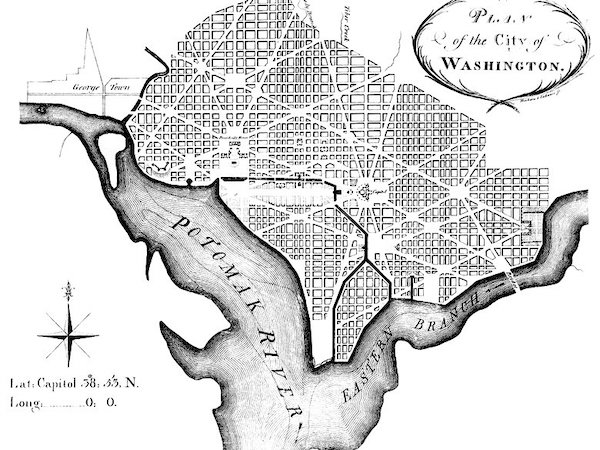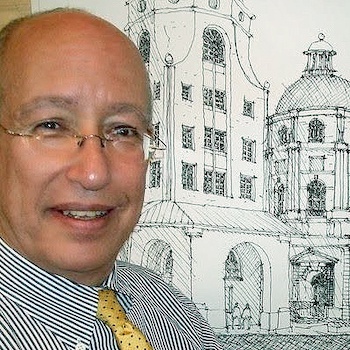Book Review: “The Art of Classic Planning” — How to Build Beautiful and Enduring Communities
By Mark Favermann
By so memorably reestablishing the fundamentals of urban design and planning, The Art of Classic Planning will be a strategic addition to any architecture or urban planning library.
The Art of Classic Planning by Nir Hiam Buras. Harvard University Press, 496 pages, 749 color photographs, $95.

Boston’s “newest” neighborhood is the Seaport Neighborhood. During the perhaps overly long administration of Mayor Thomas Menino, the goal was to create a well-planned neighborhood, balancing a diverse residential mix of market level and affordable housing with 21st-century businesses as well as commercial services and conveniences, including parks and open space. For decades, the area, framed by rotting wooden piers, had hosted a few major structures in a vast sea of parking lots. It was a blank canvas. By 2017, the Seaport had become the fastest growing part of Boston. Somehow, though, the City of Boston’s scheme had gone badly awry. Its aspirational initial strategy had been forsaken. High-end development had triumphed over diversity, affordability, and efforts at architectural grace.
Tellingly, over several years the planning and urban design overview of Boston’s Seaport District had become exceedingly tentative, first by the Boston Redevelopment Authority (BRA), which was eventually rebranded as the Boston Planning and Development Agency (BPDA). The name of the neighborhood had to be changed several times. Though it is still considered by many to be part of the South Boston neighborhood, the identification went from The Boston Harbor Area to The Boston Waterfront to The South Boston Waterfront to The Innovation District with its sub-area Information District and back to The Seaport District. It is now the Seaport Neighborhood.
The Seaport Neighborhood began in fits and starts. Only after the 2008 Great Recession did it build up sufficient steam to boom. But the fact is that, in a diverse city with a majority of nonwhite citizens, only 3 percent of the Seaport Neighborhood’s population fits that description. In a city with a major affordable housing problem, it is one of Boston’s highest-rent neighborhoods. Not only that, but the Seaport Neighborhood is anyplace USA, filled with rather charmless glass and polished metal high-rises that are nearly all at the same height. There are no meaningful references to Boston’s history, patina, or character. Other then a proliferation of expensive restaurants, the “neighborhood” offers no connections to Boston’s emerging mixed ethnic culture majority. So what went wrong?
According to the author of The Art of Classic Planning, experienced urban designer Nir Haim Buras, the answer is simple: politicians and planners forgot the basics of urban design and planning. Increasingly, city planning has been done piecemeal and superficially. Buras argues that the best parts of Boston were those that had been classically planned and that these basics had been followed — until the 20th century.
Landmark places like Quincy Market, the Boston Common, the Public Garden, Haymarket Square, Old North Church, and the commercial streets of the Back Bay and Beacon Hill are examples of American architecture at its best. In contrast, the Seaport Neighborhood planners give lip-service to sustainability and walkability as well as smart and green technologies. Essential values were discarded in the planning and development process.

L’Enfant Plan of Washington.
Containing hundreds of full color photographs and illustrations, Buras’s book offers an articulate account of how we can return to the “classic” approach to what makes cities attractive, appealing, and livable. By going back to the roots of the urban design process, by carefully following basics, he feels that today’s urban areas can be salvaged, their function and beauty restored for the long term.
Buras is inspired by the beauty and function of great cities like Kyoto, Paris, Prague, Lisbon, and Venice. His approach is also motivated by his love of such noble homegrown planning and design successes as Washington, D.C., and Chicago. His eloquent prose, which deftly combines theory and examples from history, serves his cause well: to develop clear and necessary guidelines that will set best practices for bringing his classic planning approach to today’s large urban communities.
The book is divided into three sections. The first three chapters provide historical background and then an analysis that details the modernist “gutting” of cities. The second section is a survey of classic urban planning fundamentals. The final section looks at classic planning tools and design implications.

Author Nir H. Buras is appalled by what he considers to be tragic errors in urban design over the last century.
The highly effective American architect and urban designer, Daniel Burnham, the master planner of the 1893 World’s Columbian Exposition in Chicago (aka White City), provides a key quote in The Art of Classic Planning: “Make no little plans. They have no magic to stir men’s blood and probably will not themselves be realized.” Throughout the book, Buras builds on this belief in ambition to describe what he considers to be the most effective plans (aesthetic and functional) for major cities throughout the world. He is appalled by what he considers to be tragic errors in urban design over the last century. He passionately feels that — despite praise from some quarters — missteps must be critiqued and rejected. Buras makes a strong plea to look skeptically at most of 20th- and early 21st-century urban planning.
The expansive dreams that propelled such impressive achievements as L’Enfant’s Washington, Haussmann’s Paris, and Burnham’s Chicago rebuke much of what is being built today. Great cities around the world should be looked at as models of successful and strategic human-centered planning. The author convinces by documenting and elaborating on the importance of the holistic practices that held sway before the reign of modernism. He disdains the modernist approach because it looked at the urban environment as a kind of pedestal, a place for giant pieces of sculptural architecture that were more often than not hostile to human interaction.
Unfortunately, the planning, development, and resulting built environment of Boston’s Seaport Neighborhood makes an airtight case for what Buras asserts in The Art of Classic Planning. This thoughtful book affirms our need to carefully and systematically create beautiful and enduring communities, and it does so in a way that should awaken practitioners, politicians, and developers to their responsibilities. By so memorably reestablishing the fundamentals of urban design and planning, The Art of Classic Planning will be a strategic addition to any architecture or urban planning library.
An urban designer and public artist, Mark Favermann has been deeply involved in branding, enhancing, and making more accessible parts of cities, sports venues, and key institutions. Also an award-winning public artist, he creates functional public art as civic design. Mark created the Looks of the 1996 Centennial Olympic Games in Atlanta, the 1999 Ryder Cup Matches in Brookline, MA, and the 2000 NCAA Final Four in Indianapolis. The designer of the renovated Coolidge Corner Theatre, he is design consultant to the Massachusetts Downtown Initiative Program. Since 2002, Mark has been a design consultant to the Red Sox. Mark is Associate Editor of Arts Fuse.

Wonderful and beautiful book!!